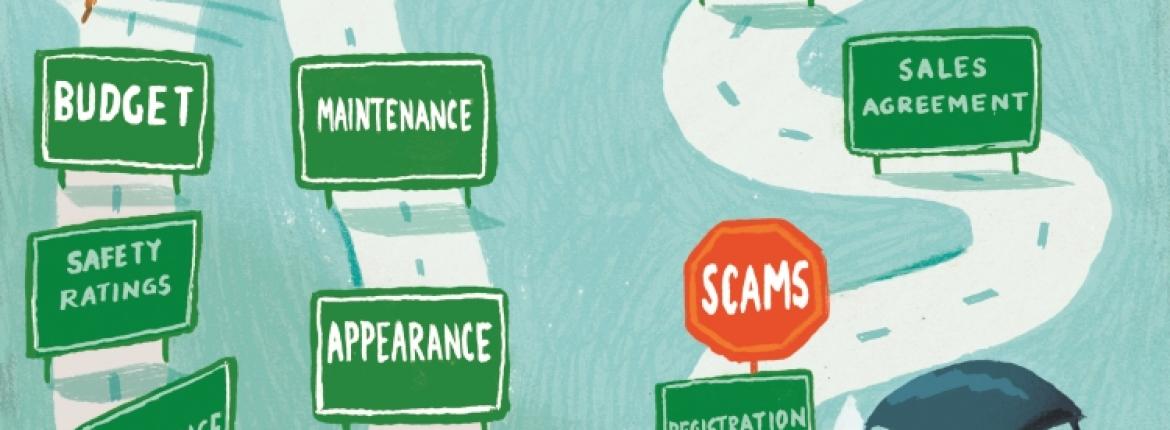If you don't know what you’re doing, buying your first used car can be a daunting
proposition. It needn’t be. A little bit of homework and a few simple checks will ensure you don’t drive away in a lemon.
As a first step, decide how much you can afford to spend. Set your maximum dollar value and do your best not to exceed it.
Once you have a budget, you can start looking for a car. Searching websites, such as AA Carfair, can help you identify what type of vehicle suits your lifestyle and image.
The safest option is to buy from a used car dealer. You’ll pay more but, legally, you’re covered by the Consumer Guarantees Act (CGA) for a reasonable amount of time. From June dealer auctions, both online and physical, will also be covered by the CGA.
You won’t have that safety net purchasing privately, but your money may go a little further. There’s a risk that you’ll end up with a dud that costs more in repairs than it’s worth. That’s the trade-off.
Once you’ve fallen in love with a car, you’ll want to check its fuel economy and its Used Car Safety ratings on the RightCar website to see how well it rates for occupant protection in the event of a crash. You’re onto a good thing if the car is listed as a ‘safe pick’.
You’ll also want to research insurance options because some makes and models cost more to insure than others. To avoid any nasty financial surprises at the mechanics, look into the costs of servicing and replacing common parts as well.
Now, go and view the car. A well-maintained vehicle with low mileage is preferable. Here’s a tip: a car’s appearance is a good indicator of the kind of care it’s had.
Don’t be afraid to ask the seller questions. Ask for the maintenance history to see what work has been done on the car and find out whether the vehicle’s engine has a cam belt or timing chain. A cam belt replacement can be expensive, so it’s worth knowing. If told it has been replaced, check for proof in the maintenance history and look for when it will be due for renewal.
Ask whether the vehicle comes with two keys, as getting a spare cut can be expensive.
Now, it’s time for a test drive – if possible, take along a friend who has mechanical knowledge. If, after driving, you’re keen on buying the car, then arrange an AA Valuation and an AA History report to check whether money is owing on the vehicle, whether it’s priced right and that it’s not reported stolen. If the history report indicates that it’s previously been deregistered, this could indicate it’s been written off, repaired, then re-registered. These are all things you want to avoid. With a private sale it is important to ascertain whether the seller is the owner of the vehicle, as they could be selling the vehicle illegally.
If all checks appear fine, it’s time to arrange an AA Pre Purchase Inspection on the vehicle. If you are satisfied with the report, negotiate a price with the seller and complete the sale.
When buying from a dealer, be sure to read the sales agreement carefully before signing. With a private sale, ensure the seller gives you a comprehensive receipt. It also pays to go into a bank with a private seller and transfer the money directly into their account or exchange the cash in a place of safety. Beware of scams! The person who’s requesting the money be transferred into their offshore account is usually sitting comfy in another country. If the deal looks too good to be true, it probably is.
The final thing to be done is for both the seller and the purchaser to notify the NZTA of the change of registered owner. This can be done at an AA Centre, with the seller completing form MR13A and the buyer form MR13B. Alternatively, this can be done online on the NZTA website.
Congratulations! You are now a proud car owner. That wasn’t so hard, was it?
Reported by Donavan Edwards for our AA Directions Autumn 2024 issue




